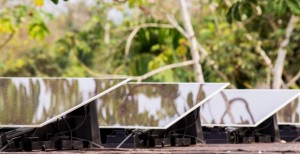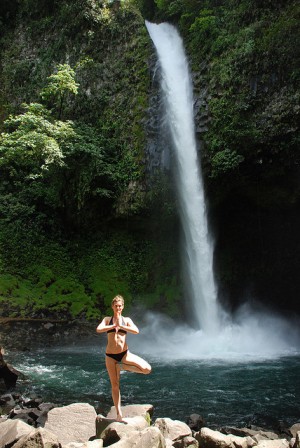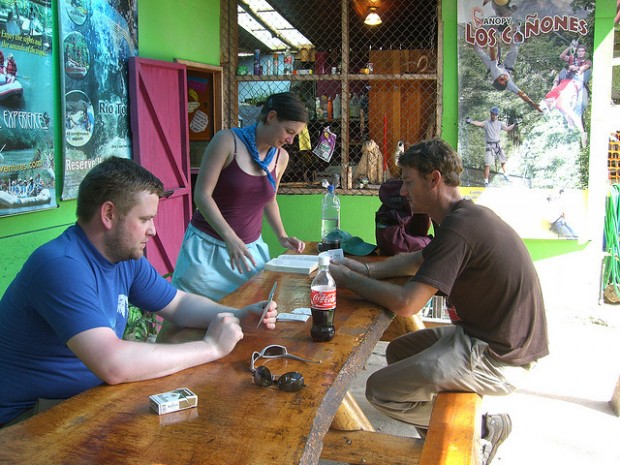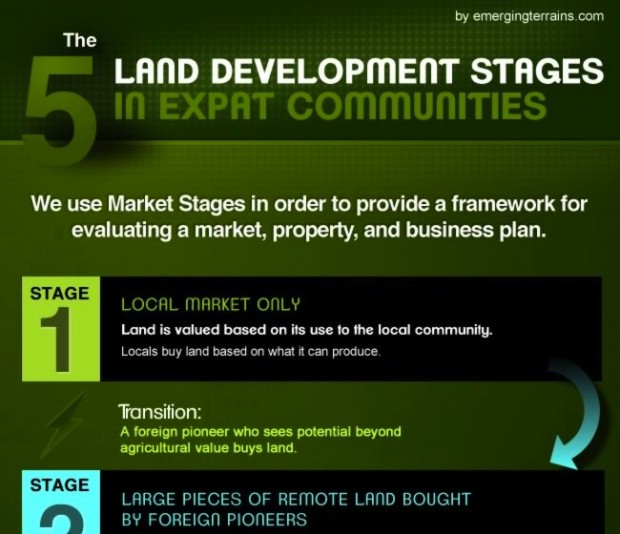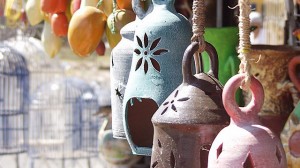Honduras 3 Count, where we bring you 3 Honduras stories that you shouldn’t miss.
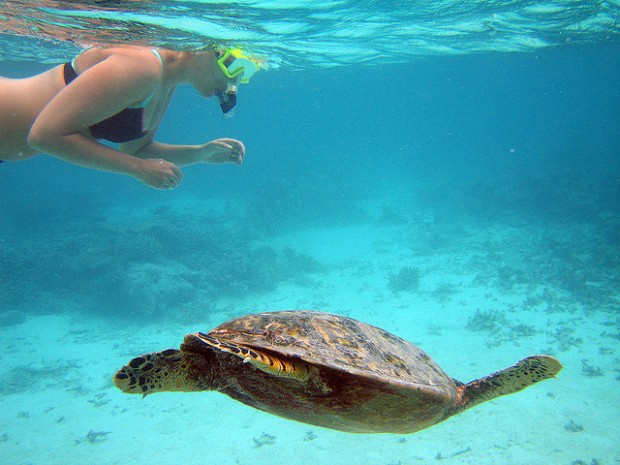
Photo: Christian Steen
1. Wow! 130 Spots to Snorkel in Roatan
Roatan is surrounded by a barrier reef that lies approximately 300 feet from the shoreline and that brings you a wealth of snorkeling spots, more than 130. These amazing spots, along with a maze of underwater sunken treasures, make the island a diver’s or snorkeler’s paradise.
2. What Kite Surfers Can Teach Us About Honduran Culture
A small island named Guanaja in Honduras features near perfect waves and breezes…ideal for kite surfing. This little island, and its inhabitants, are completely disconnected from the rest of Honduras, and in some ways, the rest of the world. Here, tourism is still in its infancy, which made it the perfect place for a group of kite surfers to gear up, tackle the waves, and discover Honduran culture along the way.
3. Finding the Hidden Mountain: Cerro Las Minas
Cerro Las Minas is the highest mountain in Honduras and relatively unknown. Two hikers from Distan Peak take on the challenge of finding Cerro Las Minas and reaching its peak. They went in expecting a jungle experience, but found it was more like a long walk in the park.
Gaia’s Way Estate is a unique residential development in Belize focusing on completely eco-friendly homes. Each is setup for Living off the Grid, with low environmental impact, using rain water catchments and solar panels to provide each with its own power and water.
Viva Tropical took a deeper look at Gaia’s Way Estates sustainability success through an email interview. Here are their thoughts on going off grid and why:
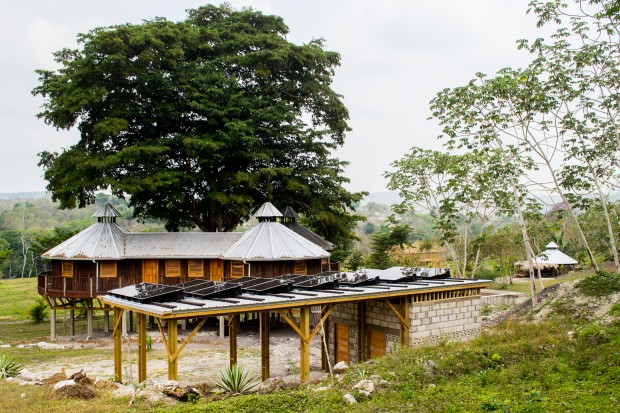
Gaia’s Way Estate www.facebook.com/JCariddiPhotography
Why was off grid power chosen?
Off Grid Power was chosen because it is Environmentally Friendly, Low Impact, and It is essentially the wave of the Future. Self Sustainability is the Vision of Gaia’s Way. The properties are set out as 3/4 to 1 Acre of highly fertile soil as to provide for sufficient living space, and room to have your own orchard, small garden, and a few livestock.
Were there any environmental factors like winds, shade, water, etc. that make this site unique in terms of using off grid power?
The area Gaia’s Way was established has natural terracing allowing for easier planning for home construction, and all homes are designed to collect solar power on their roofs. The idea is for all the solar generators to eventually feed into the grid, and essentially sell excess power. The main power grid is located only 300 ft. away from the Property.
Grid Power being only 300ft Away from the Property, it will be easy to Connect to the Grid to Excess Power, and in Turn earn Credits with the Power Company.
Sometimes money can be saved by using local techniques to build, were any of these techniques used in the project?
All the houses have been designed off of Ancient Mayan housing designs. Local palmetto (A Local Savannah Palm) is used for siding, making for really cool and bug resistant homes. We also use Caliche (Natural White Lime Plaster) which was also used by the Mayans for their homes, and temples.
It has a High Silica content that makes it water resistant. Caliche, being white reflects sunlight, and in turn keeps the homes cool, without the need for Insulation.
These homes are Built Green/Eco Friendly, by using recyclable materials, farmed lumber, and only using hardwoods for finishing, uniquely designed metal roofs to be able to collect rain water for home use.
The builder designer used her knowledge of Mayan construction and 40 years of experience, to design Mayan styled homes. All house designs are original to Gaia’s Way Estate.
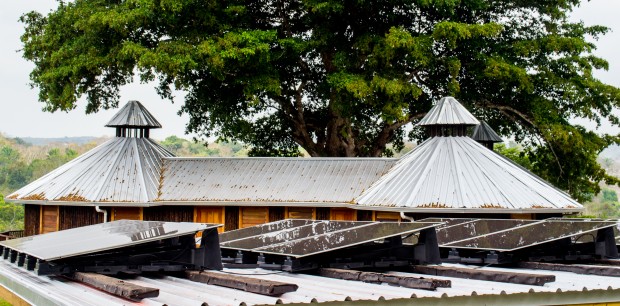
Gaia’s Way Estate www.facebook.com/JCariddiPhotography
How did you source your solar power and what brands and products were used?
We searched for the best company to provide us with the most Efficient, High Yield, Solar Panels along with an Inverter System to Convert the Power to a More Efficient AC 110V Backbone, with a Variety of Packages that deliver different outputs to provide the freedom to Maintain Luxury with Self Sustainability.
We use a Variety of Brands, but Exclusively at Gaia’s Way Estate, we would Recommend one of our Newer German CIGS Thin Film Panels, that are Highly Efficient, being able to capture more sunlight during cloudy weather than most conventional panels today.
Who is off grid living for?
Off grid living is for anyone who wants to be Self Sustainable, Environmentally Friendly, and easily live off of a fixed income.

Gaia’s Way Estate www.facebook.com/JCariddiPhotography
How much power is there per dwelling? What kind of appliances are powered in this community?
Each solar system is set up for an individual needs and wants.
We recommend the use of Gas Water Heater, Gas Refrigeration, and Gas Stove/Ovens. The Natural Gas is produced here Locally in Excess.
Do you need a back up generator?
Small backup generators are recommended for Servicing of Batteries.
Living in Central and South America is a dream many Northerners hold but simply do not know how to make a reality. Financially supporting your life and travel abroad in Latin America is surprisingly simple and actually common among many travelers. You do not need a work visa and you do not need a resume. Get savvy and explore these options, which offer valuable work and life experience while funding your time abroad.
Live for Free in a Hostel
Hostels all over provide free food and lodging for volunteers who contribute to the upkeep of hostels. Meet other travelers and get a taste of what it would be like to own and run your own. Consider where you would like to live, then contact hostels with good reviews on sites like TripAdvisor or Hostel World. Better yet, build relationships while backpacking and circle back to the hostels that made you feel at home.
Work in a Local Café
Expat-owned cafes tend to hire foreigners who can speak English fluently with tourists. Wages tend to be low but if you work in places frequented by North Americans you will likely make enough in tips to get by. This is an excellent experience in learning what it takes to run a café in a developing country.
Volunteer on a Farm
Contact permaculture and organic farms which usually operate with the help of local and expat volunteers. Learn how to grow your own food while living for free. Some farms may even pay you based on how much you yield. Research areas near National Parks with farming and expat communities. In Costa Rica many opportunities exist on the Osa Peninsula and in the mountainous region of Panama surrounding Boquete.
Become a Divemaster
Providing dive lessons in tourist towns can be lucrative and it’s a great way to dive for free. It takes some investment to get your certification through PADI, but if you love to dive it is an ideal job.
Teach English
It may not be as lucrative as teaching in Japan or Korea, but opportunities exist in Latin American cities for foreigners teaching English. Seek out cities looking for native English speakers.
Give Massages
Many spas in beach and tourist towns all over Latin America employ foreigners certified to practice massage. Prices are geared towards tourists which can offer a pretty decent income. It is also possible to avoid the overhead expense of working in a spa by setting up your own shop on the beach. Be aware that this is often illegal but the law is rarely enforced.
Teach Yoga
Like massage therapists there is a demand for yoga instructors, particularly in Costa Rica which tends to have at least one studio in every town. You can also offer private lessons to tourists in their homes or hotels or teach your own public classes on the beach.
Manage Rental Properties
Many foreigners who own homes abroad choose to live elsewhere for a good part of the year. This is so common that a demand exists for rental agents advertising and managing vacation rentals. If you have a background in real estate or property management this is a great way to make first world wages abroad. It is possible to represent yourself or become part of a local company.
Invest in Your Own Business
This is the most common path expats tend to take when deciding to live abroad. Is there a business you have always dreamed of running? Perhaps a hotel and spa? An organic café? A hip wine bar? A shop selling artisan goods? A tour company showing the best of the country you love? Your options are endless and investment tends to be much less expensive than in Western countries. If your business is geared towards tourists you can charge first world rates and make a good livable income.
Work Online
You can find incredible freedom to live and work anywhere in the world at any given time when you are able to work online. Depending on your skill set you can create a freelance business online likely makes the same wages you made in your home country. Look on job boards for freelance writing opportunities, develop a client base for web and graphic design, or find a way to make your other skills work online. There are Interior Designers, Nutritionists, Project Managers, Marketers, and others who have shifted their careers to be entirely based online.
Get creative and find a way to finance living abroad if you feel called to do so. It is more than possible.
There is plenty of sun and sand on the coasts of Ecuador, where some of the region’s most pristine and undeveloped beaches can be found. We’ve rounded out the top five Ecuador beaches to get you started.

Photo: Andrew Hall
1. Atacames, Province of Esmeraldas
If you want to escape the typical foreign tourist locations, Atacames offers a long strip of wide, sandy beach and a lively party atmosphere. Be warned; it is very popular with the locals who flock there on holidays and weekends. Probably one of the Ecuador beaches to avoid if you’re looking for more off the beat and path.

Photo: Jose Gildela
2. Muisne, Province of Esmeraldas
If you want a quieter, more relaxing experience, Muisne is an ideal location. The beach is a long, quiet strip of sand on an island just off the coast and requires a short boat ride.

Photo: Matt Woottan
3. Montanita, Province of Guayas
Montanita is where the surfers go, with large waves, best attempted by intermediate to expert surfers. The easiest way to get to Montanita is by bus from Guayaquil.

Photo: Johnny Chunga
4. Salinas, Province of Guayas
If you are looking for a developed beach town with a great deal of activities, then choose Salinas. Two hours from the busy port city of Guayaquil, Salinas is one of the most upscale beaches in the country, with many high-end resorts and five-star hotels towering along the shore.

Photo: Athena Lao
5. Canoa, Province of Manabí
This picturesque, sleepy fishing town is ideal for a relaxing getaway. Although popular with foreigners, it is not as crowded as some of the more well-known beaches in Ecuador. The beach is long and wide, and often empty, stretching on for miles. Canoa Ecuador is one of our pics up and coming spots.
Which Ecuador beaches are your favorites?

If you thought Captain Morgan was just the name for a bottle of popular rum, you were wrong. Morgan was not a legend, but a Welsh admiral named Sir Henry Morgan. What was believed to be his ship was recently found off the coast of Panama.
From 1663-1671 Captain Henry Morgan pillaged the sea ports of Latin America and sacked Panama City, one of the wealthiest in the area. He lost many vessels during his years as a privateer, one of which was his flagship ‘Satisfaction’ during the raid on Panama City.
340 years later, archaeologists from Texas State University have discovered a large section of the hull from what they believe is Morgan’s flagship, The Satisfaction and are beginning to retrieve artifacts from the vessel and surrounding sea floor.
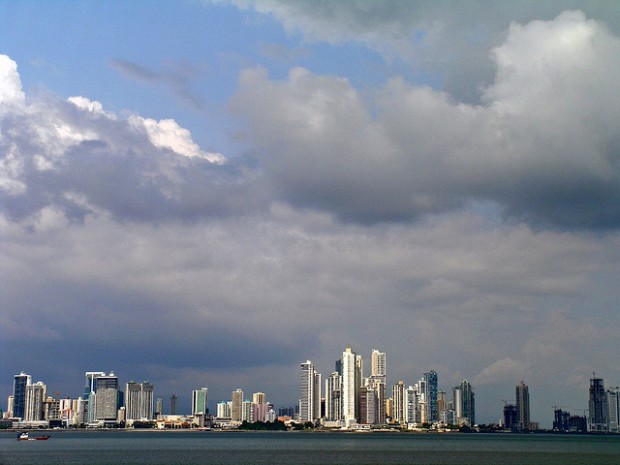
Panama City, Panama
At the heart of Central America, which ties together North and South America and the Pacific and Atlantic Oceans is a small, quirky country being hailed as the next “Singapore of Central America” – Panama.
Panama is the fastest growing economy in 2013 for Latin America
This that has many experts comparing it to Singapore, another rag-to-riches success story.
But Panama isn’t booming just because of lucky geography, it’s booming because of smart free-market, investment-friendly policies which have sharpened its advantages:
- Panama’s currency is the U.S. dollar. This makes investing in the country easy.
- Banking and communication services are world class.
- Panama launched a five-year, $13.6 billion investment plan, focusing on schools, hospitals, sewerage, roads, and metro transit system.
- Panama’s import tariffs are among the lowest in Latin America. Also, the country has received foreign direct investment worth nearly 9% of GDP.
- Panama is a well-regarded tax haven and its banks offer a high degree of privacy.
- There is no tax on interest earned from bank accounts for locals or foreigners. There are no corporate or personal taxes on offshore activity. Residents pay no local taxes on their foreign-earned income.
- The result: an economy that’s grown at an 8% or more clip over the past five years.

Bocas del Toro, Panama
Booming Expat Paradise
Panama earned the number 2 spot on Forbes’ The 10 Best Countries to Retire to in 2013 who say:
“Panama is just plain easy, Panama City is a vibrant, cosmopolitan city with great restaurants, and excellent hospitals. It’s a banking and commercial hub so you find a real international community there. Panama is committed to attracting foreign retirees and offers the world’s best incentive program to do so, making it convenient and easy to get residence there.”
Things will cost you significantly less in Panama than what you’d expect back home. “A budget of $1,700 to $2,500 a month, housing included, would see you eating out, perhaps with a housekeeper a couple days a week, movies a few times a month, and so on.”
Panama Canal and Ports
A construction boom is also changing the landscape of Panama City. Office towers go up as fast as men can build them, including the Trump Ocean Club and Latin America’s first Waldorf Astoria hotel. But let’s not forget the work being done to double the capacity of the Panama Canal.
The Canal’s annual revenues have grown to over $2 billion (7.5% of GDP). Traffic and revenue were up about 25% in 2011. This produced a ripple of growth in many related businesses, such as insurance, ship maintenance and repair, trade finance, and banking. The canal and Panama’s business-friendly regulations have expanded big insurance, finance, and legal offshore industries.
Last year, the free-trade zone in Colón – on the Atlantic end of the canal – and Balboa, Panama’s Pacific-side trade gateway, became Latin America’s two busiest ports. These two ports are set to explode soon after the canal’s $5.25 billion expansion project is completed in 2014. This is one reason Colón’s become the regional base of firms like Procter & Gamble (NYSE: PG)… Two-thirds of the traffic through the canal is coming from or going to America.
Get ready for more growth. Panama is booming.
Want to swing through the jungle like Tarzan? Then take up canyoning and Costa Rica is the perfect place to give it a try.
This emerging eco-sport is a combination of waterfall rappelling, down climbing, river tracing, and hiking. Check out our picks for the most incredible, if not a bit off the beaten-path, places to go canyoning.
1. Hang by a rope in Jaco.
Jaco might be home to the most rappel lines in all of Costa Rica. It is also where you will navigate down a 300 foot waterfall through a series of smaller falls and finally end up dipping into calm pools, the perfect spot for a bit of bird watching.

Photo Credit: Gina Grove
2. Uvita, is for beginners.
This is where Mother Nature built her own waterfall theme park. It’s a great place to begin canyoning. Most treks involve rappelling through several waterfalls of varying heights from smallest to biggest, making it a great stepping stone into the sport.

Photo Credit: Eevryday Family Blog
3. Turrialba meshes zip lines and waterfalls, high up in a cloud forest.
Turrialba is home to the Pacuare river and the Puente Vigas Canyon and sits just a two hour drive below San Jose, the nation’s capital. Canyoning at Turrialba is just a bit more difficult than at Uvita, with waterfall rappelling, vertical climb downs, and zip lines through a rustic cloud forest.

Photo Credit: Saku Yanini
4. Waterfalls are Monteverde.
Prepare to get wet, Monteverde is known for its waterfalls. Getting to these isolated waterfalls will have you hiking through a cloud forest into a remote canyon surrounded by primary rainforest. Definitely a true canyoning experience.

Photo Credit: Graeme Churchard
5. Go big, go large at The Lost Canyon.
The Lost Canyon is hands-down said to be the best spot for canyoning in all of Costa Rica. Near the Arenal Volcano, it is rugged, mountainous terrain making for an memorable canyoneering experience.

Photo Credit: Lars Olsson
Have an incredible canyoning experience you would like to share or just know of a great spot we missed? Leave us a comment below!
The stunning beaches of Cancun, Playa del Carmen, and Tulum have brought tourists to the Yucatan for years. Unfortunately the popularity of these white sand and clear ocean beaches have brought development which has all but spoiled some areas. It’s easy to associate Cancun with drunk college kids and high rise hotels.
Despite this reputation the Yucatan in Mexico is an incredible destination for beach lovers, outdoor adventurers, foodies, and culture seekers.
Here is why.

The Natural Wonders That Are the Cenotes
Few places in the world contain the incredible natural phenomenon that is a cenote, and the Yucatan is home to over 6,000. A cenote is a natural pool created below the Earth’s surface from the collapse of limestone. The water is crystal clear and glows blue or green. It is an incredible site that simply cannot be put into words.
Dos Ojos cenote is one of the most famous and is a short drive from Tulum. Tours are possible as well as self guided snorkeling and cave diving. Imagine swimming through water as clear as Aquafina among limestone stalactites.

The Beautiful, Undeveloped Islands
With crystal clear turquoise water for miles, perfectly combed white sand beaches, and incredible marine life, Holbox, Isla Mujeres, and Cozumel have all the allure of popular Caribbean islands but with Mexican culture and Latin American prices. Swim with whale sharks on Isla Holbox which has no cars, walk down the endless pristine beach on Isla Mujeres, and dive or snorkel at the second largest barrier reef in the world at Cozumel.

The Food
The food here is incredible. This is Mexico after all. If you stay outside of the all inclusive hotel zone in Cancun you will find amazing chile rellenos, sopas, and tacos for less than a dollar. In Tulum chicken stewed in mole or chile verde is served with steamed rice and freshly made tortillas. Walk along the winding colorful streets in Isla Mujeres to find whole roasted spiced chickens and perfectly charred corn. Cinnamon dusted churros, perfect tacos al pastor, and crispy crepes slathered in nutella are cheap and everywhere.

The Ruins
The Mayan ruins in Tulum are on a cliff overlooking a stunning backdrop of the Caribbean sea. Where else can you sip a Margarita on the beach then walk through the ruins of an ancient city?
Chichen Itza, located a few hours from Tulum, was named one of the new wonders of the world and with good reason. It was one of the largest Mayan cities, with an extremely diverse population, and remains relatively well preserved.
Market Stages are crucial for real estate investors to make sense of property prices in Central America.
Especially when those prices seem so irrational.
It took me a long time to wrap my left-brained, over analytical, where-are-the-market comps? mind to wrap itself around property values and markets in Central America.
How did I finally get a grip on the apparent chaos?
Market Stages – The Missing Link
We wrote in a more boring and detailed way about market stages over on our investor blog. Then we decided to make an infographic to help you first understand the stages.
Once you understand what the stages are, there are all sorts of ways they can help you and we’re going to write about those.
Things like:
- Pricing: How to value properties in Central America
- Business Plans: What should I build?
- Customers: Who is going to buy my real estate?
- Timing: What in the world drives the timing of real estate markets in Central America?
We’ll get to that. But first, use this infographic to learn the stages.

Nicaragua 3 Count, where we bring you 3 Nicaragua stories that you shouldn’t miss.

Photo Credit: Mareana
1. Pressed for Time? 6 Quick Ways to Enjoy Nicaragua
Nicaragua is fast becoming one of the “go-to” destinations for eco-tourism today. And one visit reveals a multitude of surprises for new-to-the-country visitors. But if you don’t have a lot of time to travel, here are six, quick ways to enjoy Nicaragua:
- Tackle two kinds of surfing.
- Hug a Güegüense statue.
- Get lost in a low-stress local market and come away with a keepsake.
- Throw a pot during an escorted Morgan’s Rock excursion.
- Walk on the wild side – visit a national park.
- Chow down on fresh, local food at bargain prices.
2. New Study Reveals Nicaragua Is a Great Place to Invest
A report from Financial Times shows Managua, Nicaragua is leading the way in Latin America with one of the best laid out strategies for foreign direct investment. Financial Times FDI Intelligence division ranks Managua third in the hemisphere behind Montreal and Toronto in the category of strategy for attracting Foreign Direct Investment. Managua was the only city in Central America to rank in the top ten in the investment strategy category, according to the American Cities of the Future 2013/14 report.
3. The One Thing Nicaragua Did Right for Tourism
Nicaragua has reduced its minimum amount of investment required to receive tax exemptions to $25,000 as a means to opens up big opportunities for those interested in investing in the nation’s ever-expanding tourism sector. The new tourism investment minimums to enjoy tax incentives are raising a cloud of excitement among small tourism entrepreneurs who hope to collect the medium and long term benefits of this new condition, with improvements mainly in the infrastructure business.
It is impossible to miss the hill known as El Panecillo Mirador, in Quito, which is topped by its statue of the Virgen de Quito who watches over and protects the city. Although not high in comparison with the volcanoes among which the city nestles, it dominates the skyline when you look south down any of Quito’s colonial streets.
There are two reasons to come here – the statue, and the view. Start with the statue. At 41 meters tall and made of seven thousand pieces of aluminium, it’s pretty awesome in its own right.
Yes, the views – spectacular, on a clear morning you can see Quito spread out beneath you and beyond the city to the surrounding volcanoes.
Don’t forget to look down; just below the feet of the Virgin is another sight, the so-called Olla del Panecillo. This large cistern is traditionally said to be of Inca origin, but recent tests have dated it to after the Spanish conquest.
Healthcare is just one of the many aspects that a would-be expat might, and should, take into account when researching the retirement destinations they’re considering. Those hoping to relocate to Panama can go ahead and breathe a cautious sigh of relief.
While the country’s healthcare system is certainly not without its flaws, many expats have actually cited it as one of the best things about living in Panama. However, like almost anything else in Central America, it can vary greatly depending on where you go.
As a general rule, the best facilities and physicians are located in Panama City. However, some other areas are starting to catch up. For instance, Hospital Chiriqui, which treats many expats from the mountain haven of Boquete, provides an even better level of service than many in the city.
It is a smaller facility and may not be equipped to treat certain specialized cases, but is quite capable for most procedures.
Private Hospitals’ Healthcare
Panama boasts several state-of-the art private hospitals, many of which are associated with renowned facilities in the U.S. Punta Pacifica, located in Panama City, is considered the most technologically-advanced hospital in Latin America and is affiliated with the Johns Hopkins Hospital in Baltimore, Maryland.
The hospital is equipped with features such as videoconferencing capabilities to allow for information sharing and education.

Punta Pacifica Panama – photo by Maleg
Panama City is home to three other major hospitals, and there are two modern facilities in David as well. Still others are scattered throughout the country. Because the nation is small, it’s difficult to find yourself more than one to two hours from a modern hospital. The more heavily populated areas are also home to other health care providers such as dentists and eye doctors.
Public Hospitals’ Healthcare
Panama also has a number of public hospitals, which are funded by the Ministry of Health and the Social Security System. (Read: They’re nearly free.) However, those who can afford private health care often choose to go that route for various reasons.
The reason many expats do not opt to obtain services from public hospitals is because they can be a bit of a toss up. At best you may have to wait a few extra weeks for an appointment and may not get the same specialized attention you receive at a private facility. At worst you may wait hours to be admitted to an ER, only to deal with staff members who are tired, overworked, or rude.
But don’t let the few negatives turn you away from this viable option. For every understaffed facility with outdated equipment, there is another public hospital with modern technology and physicians who will take as much time with you as you need. Our recommendation is that, if you plan to take advantage of Panama’s public hospitals, check them out in advance. Make sure you understand what you’re getting into before you find yourself in a situation where you need urgent care.
Medical Professionals
One of the highlights of the Panamanian healthcare system is the quality of its medical professionals. The doctors are well trained, often in the U.S., and most are bilingual. The quality of medical care you’ll receive rivals that of many hospitals in the U.S., Canada, and Europe. This isn’t due to any regulatory standards being imposed by the government. But it doesn’t seem to matter.
While nurses do not receive the same level of training as those in the U.S., expats describe both them and the physicians as having an attitude of compassion that is not often seen in their first-world counterparts. In fact, the personal attention they receive from their doctors often comes as a shock to those unaccustomed to such dedicated care.
As opposed to U.S. physician visits where you’re usually worked over by a nurse and then visited briefly by a doctor who whisks in for two minutes before rushing off to see another patient, it’s not uncommon for a Panamanian doctor to spend 30 minutes to an hour with you in his office.
In addition to this one-on-one attention, you may be given your doctor’s home or even cellular phone number, as well as his or her home email address. While this easy access shouldn’t be abused, it’s not at all uncommon for a physician to allow patients to contact him or her after hours for pressing issues.

photo by Panama Health
Availability of Treatment
Something that’s important for expats to understand about Panama’s healthcare system is the disparity between the well-trained, well-meaning physicians and their ability to meet wide-ranging needs with the limited resources available to them.
Collectively, Panama’s hospitals have all the know-how and equipment they need. Individually, they may be unable to treat some of the more unique situations that might arise.
So the good news is that, whatever your condition, there’s probably a hospital that specializes in it. The bad news is that you will need to be more proactive in choosing your physician than you may be used to.
Inconsistencies in Care
Another common frustration among expats is the inconsistency among Panama’s healthcare providers. We’ve mentioned the differences between public and private health care, but even among privately-owned facilities the care can often vary greatly.
A good recommendation is to consider this fact when planning your move to Panama. If you need a good pediatrician, make sure you like the ones located near the area where you plan to relocate. If you have a heart condition, you may want to consider meeting with the nearest cardiologist before you sign on the dotted line of a bill of sale on a remote property.
A good idea is to ask around for recommendations on physicians. Again, because Panamanian doctors aren’t subject to a lot of the same scrutiny as those in the U.S., it can’t hurt to do your research. Don’t take for granted that they can be trusted simply because they’re physicians.
In addition, while many physicians may spend the better part of an hour with you alone in their office discussing your health concerns, there are also a few (especially those in public hospitals) that seem to hardly slow down to give you the time of day. If you’re concerned with being left in the dark regarding your health conditions, it’s best to consider your options ahead of time.
The language barrier is often another area of concern for many expats. While many doctors speak English, not all do. A visit to the hospital administrator’s office can quickly answer the question of whether the hospital offers a translator and whether those services are included in the hospital fees.
Health Insurance
Although many would-be expats are probably beyond tired of hearing health insurance debated in their home country, it’s nevertheless something they’ll need to consider when shopping for their Central American retirement home.
The good news is that there are many affordable options available. Even some U.S. health insurance plans are accepted in Panama.
Locally, there are HMO plans, which offer total reimbursement of services from in-network providers, as well as international plans, which allow patients to obtain treatment anywhere including places outside of Panama.
Many private hospitals also offer membership plans, which give participants hefty discounts on procedures performed at that facility only.
Cost of Healthcare
When comparing the different aspects of health care in Panama, low costs are another big plus for the “Pro” column.
Prices are drastically less than those of first-world countries, with procedures costing as little as one half to one fourth of the cost of what they would run in the U.S. While this may seem absurdly low, the ratio of health care costs to wages is quite proportionate, since many Panamanians earn around $400 per month.
One major reason for the low cost is that the overall health care system is far less litigious than in many other countries. With fewer frivolous lawsuits to threaten their livelihood, doctors pay less for malpractice insurance. The savings are passed on to the patient.
For instance, a visit to a specialist costs about $50. A trip to the ER runs around $100, which is less than a U.S. co-payment for the same visit. Procedures such as MRI’s are a mere $500, and a facelift can be performed for only about $1,700. Prescription drugs also cost less, and many medications that must be dispensed by a pharmacist in the U.S. are available over-the-counter in Panama.
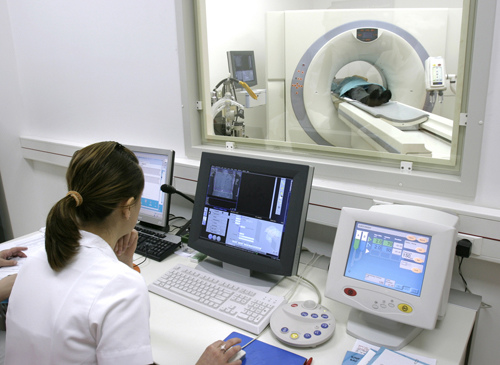
photo by Panama Health
As a result of the low costs, insurance is also much cheaper for a good amount of coverage. As previously mentioned, public hospitals offer free routine care, but those who can afford private facilities will likely choose to pay the minimal cost instead.
Medical Tourism
Because of the low costs of treatment and the many attractions the area has to offer, Panama is becoming a hotspot for medical tourism. Many foreigners travel to the country to undergo expensive or even elective procedures, since they can be obtained at such a great value. Additional benefits are its proximity to and ease of access from the U.S., as well as its use of the U.S. dollar as its currency.
In addition to the low cost and high quality of Panama’s health care, foreigners are also clueing in to the fact that it’s just not a bad place to recuperate. Its many spas and resorts are quite conducive to the recovery process, making it awfully easy to turn your medical procedure into a much-needed vacation.
Medical tourism companies make the process a simple one by arranging for practically every aspect of the trip. They can book everything from air travel to hotel accommodations to the procedure itself. As this segment of the tourism industry continues to grow, it’s sure to have only positive effects on the quality of the health care system as a whole.













